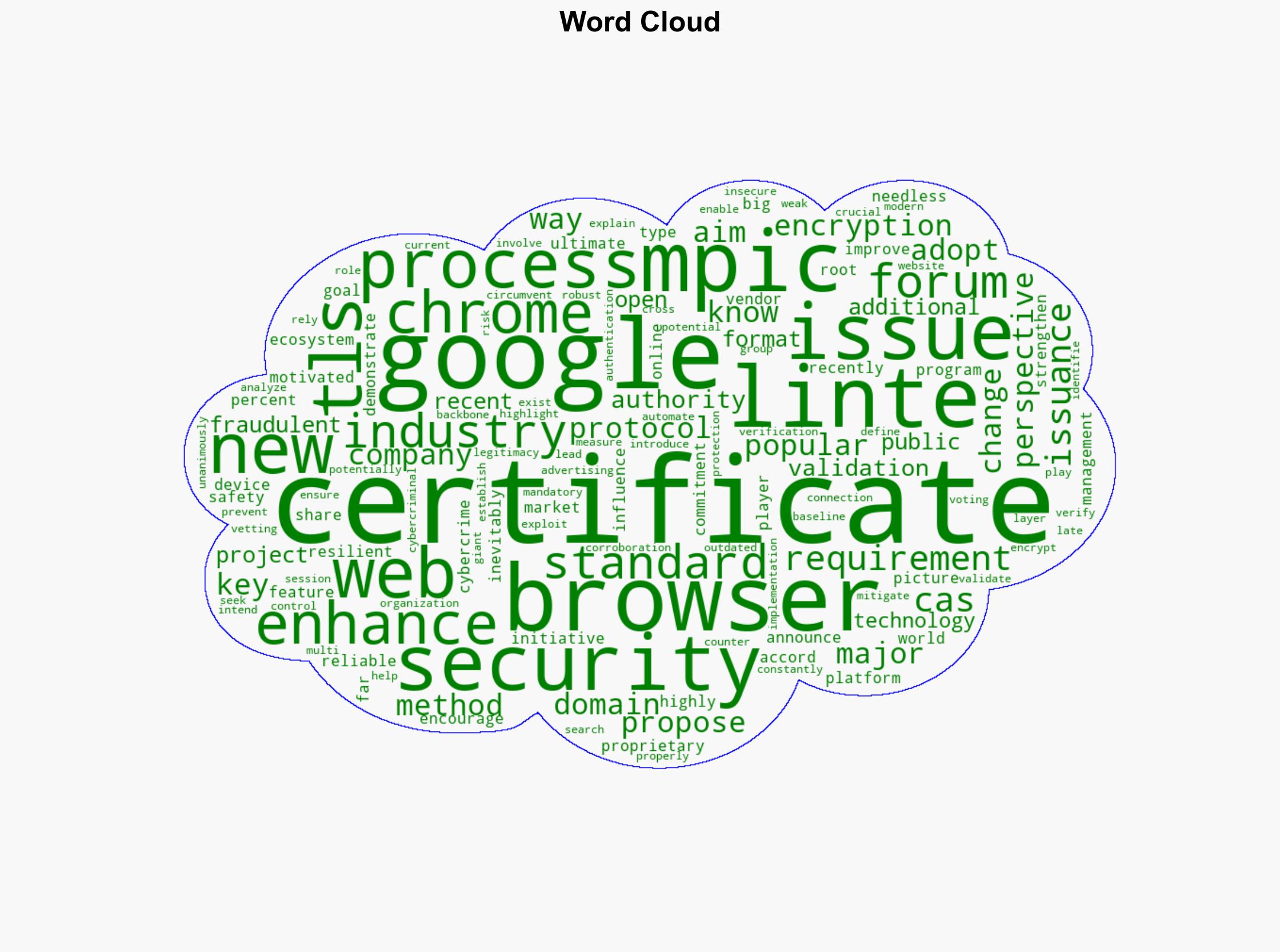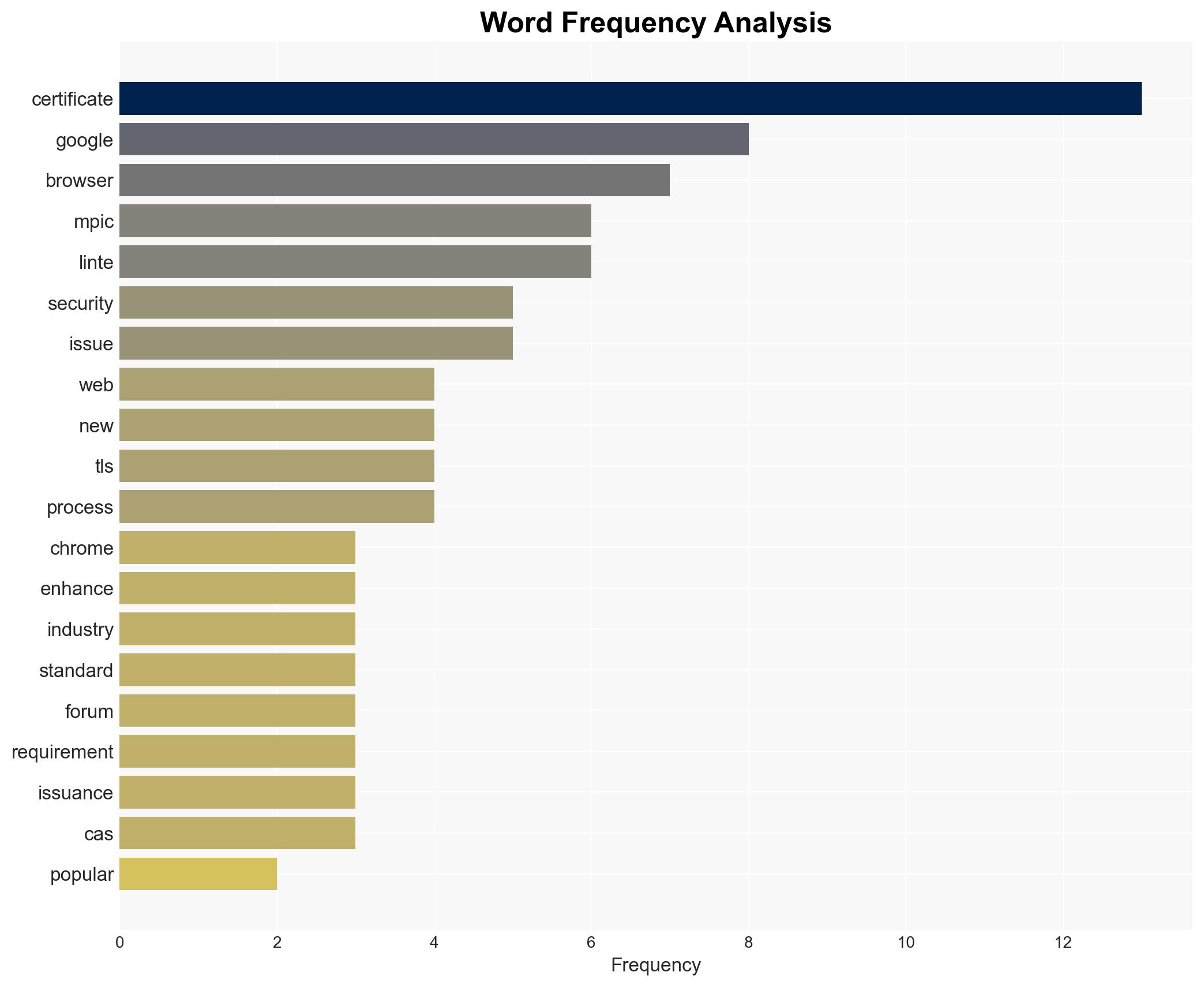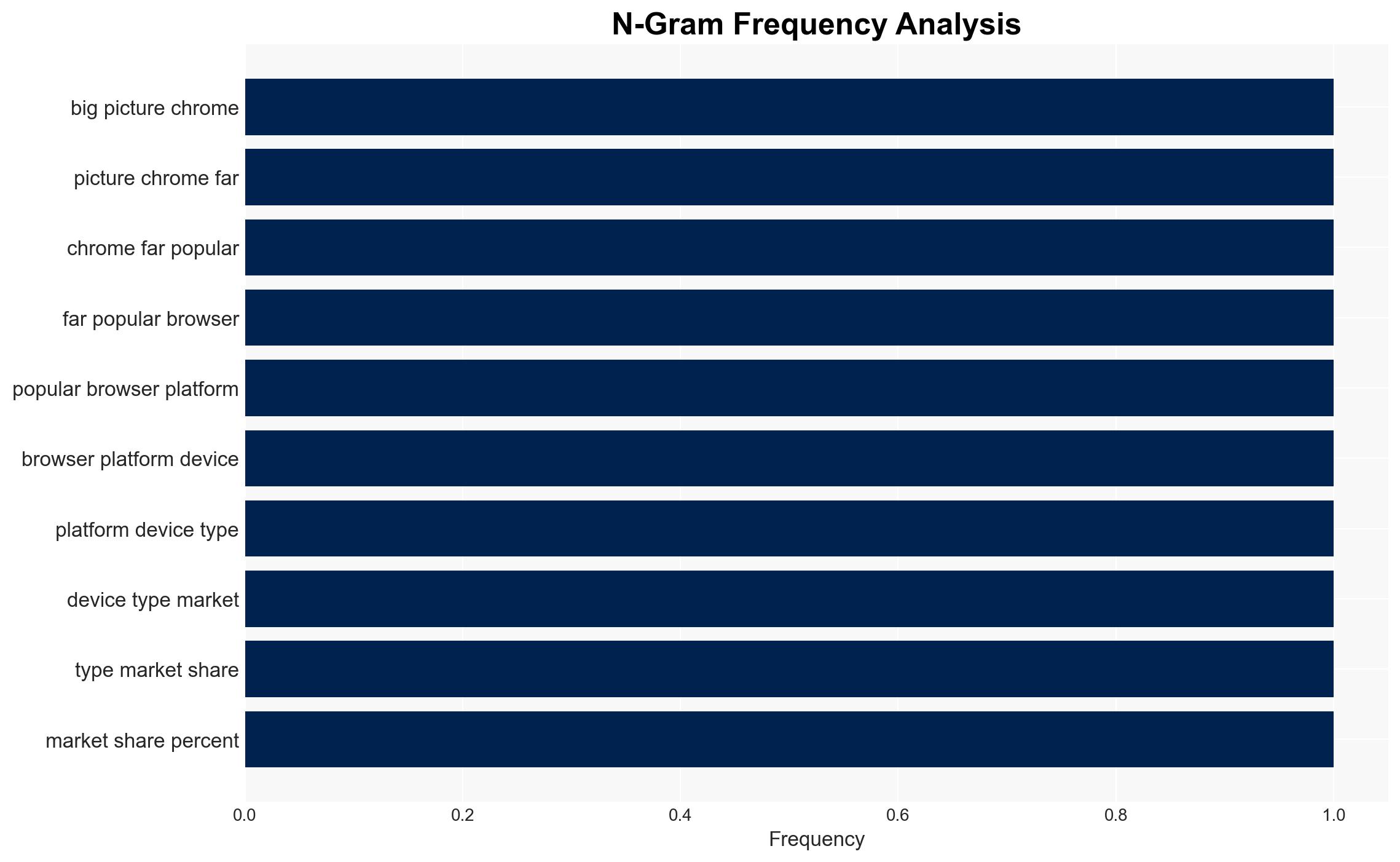Google promotes new security requirements for HTTPS encryption providers – TechSpot
Published on: 2025-04-01
Intelligence Report: Google promotes new security requirements for HTTPS encryption providers – TechSpot
1. BLUF (Bottom Line Up Front)
Google has announced a significant initiative aimed at enhancing web security by introducing new requirements for HTTPS encryption providers. The initiative focuses on the Multi-Perspective Issuance Corroboration (MPIC) process to improve the validation of domain legitimacy, thereby reducing the risk of fraudulent certificate issuance. This move is expected to influence major players in the web ecosystem, given Google’s substantial market share and influence. Stakeholders should prepare for the mandatory implementation of these standards by March.
2. Detailed Analysis
The following structured analytic techniques have been applied for this analysis:
General Analysis
Google’s initiative to enhance web security through the MPIC process represents a proactive approach to counter cybercrime. By automating the vetting process and introducing additional verification perspectives, MPIC aims to mitigate risks associated with domain control validation exploits. The unanimous adoption of MPIC by the browser forum underscores its importance and the industry’s commitment to strengthening online security. The initiative also highlights Google’s strategic role in setting industry standards and influencing global web security practices.
3. Implications and Strategic Risks
The implementation of MPIC and the new security requirements could have several implications:
- National Security: Enhanced web security measures could reduce vulnerabilities to cyberattacks, thereby protecting critical infrastructure and sensitive information.
- Regional Stability: As a global leader, Google’s actions may prompt other regions to adopt similar standards, promoting a more secure international web environment.
- Economic Interests: Companies that fail to comply with the new standards may face operational disruptions and reputational damage, affecting their market position.
4. Recommendations and Outlook
Recommendations:
- Organizations should begin preparations to comply with the new MPIC standards by March, including updating their encryption protocols and certificate management processes.
- Regulatory bodies should consider aligning national cybersecurity policies with the new standards to ensure cohesive and comprehensive web security measures.
- Invest in training and resources to enhance organizational capabilities in managing and implementing advanced encryption technologies.
Outlook:
Best-case scenario: Widespread adoption of MPIC leads to a significant reduction in cybercrime and enhanced global web security.
Worst-case scenario: Resistance to the new standards results in fragmented adoption, leaving vulnerabilities in the web ecosystem.
Most likely outcome: Gradual adoption of MPIC across major players, with incremental improvements in web security and reduced incidence of fraudulent certificates.
5. Key Individuals and Entities
The report mentions significant individuals and organizations, including:
- Browser Forum
- CertLint
- PKILint
- XLint
- ZLint





